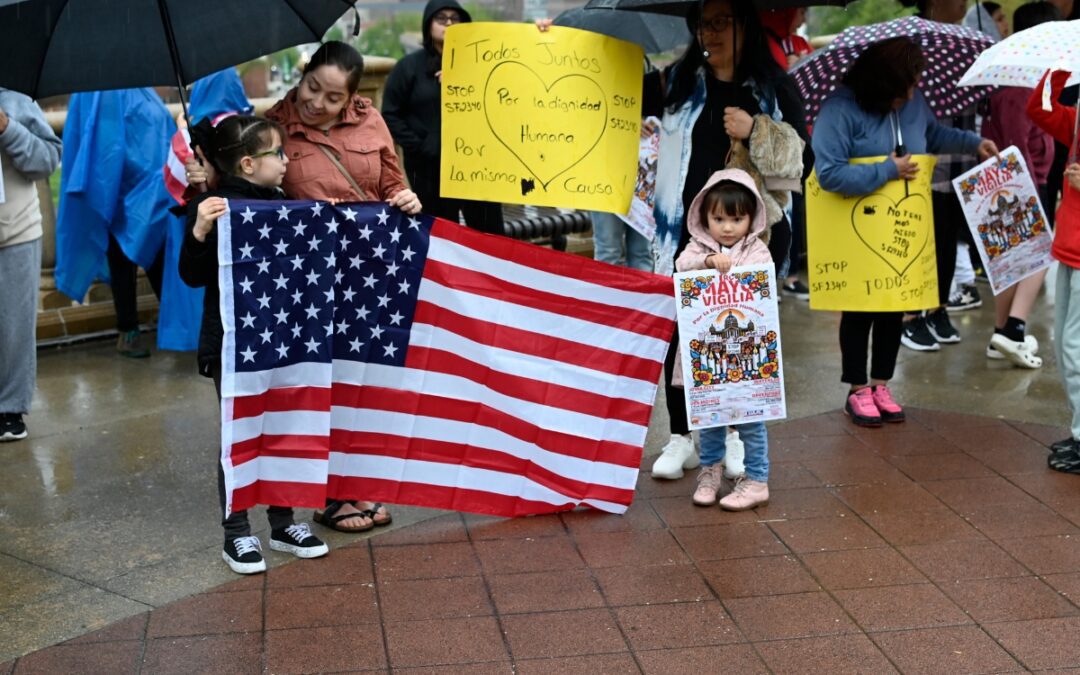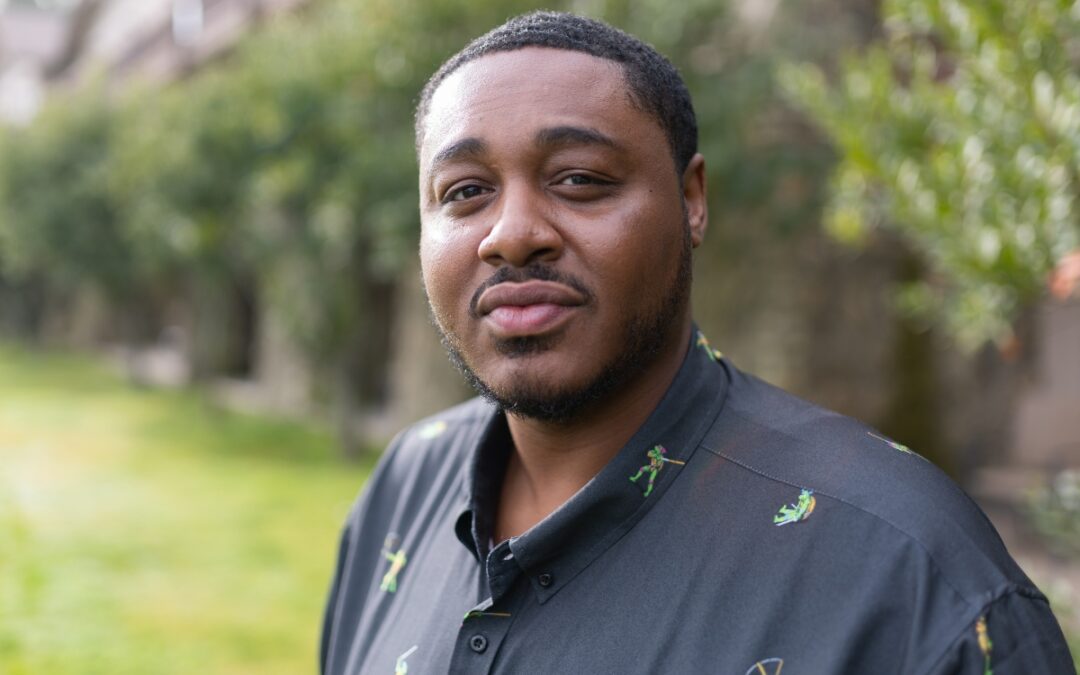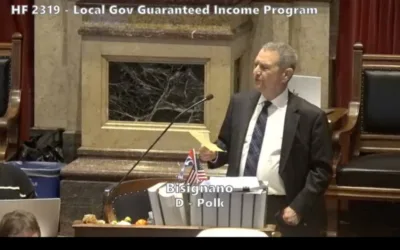
Everyone in town warned those who hadn’t seen it yet that the level of destruction in Cedar Rapids was “unimaginable.” That was somehow understating it.
Volunteers and relief groups poured into Iowa’s second-largest city this weekend to assist with cleanup and humanitarian help after Monday’s derecho storm devastated a giant swath of the Iowa landscape. Those who drove out from Des Moines witnessed a four-county stretch of utter destruction, filled with flattened corn fields and mangled farm structures. No mile of the countryside was not impacted.
Then they arrived in Cedar Rapids.
There are simply no words, photos or videos sufficient to describe the full extent of the carnage. A land hurricane. A bomb. An apocalypse. A 40-mile wide tornado. An artillery barrage. Not even those descriptions suffice as we simply haven’t seen something like this before, we have no frame of reference. Local reporters have covered it extensively under impossible conditions, but unless you see it in person, it’s impossible to fully visualize — our story here won’t be enough, but hopefully it helps.
Usually when you see a destroyed house or an overturned car on the news from most disasters, you think, well, they must be showing us the worst of the worst.
Everything here is catastrophic. That photo you saw of a massive tree so uprooted it took a chunk of someone’s yard and the street with it? There’s one of those literally every three blocks, if not more.
Every power line is tangled, every tree blasted, every house damaged, every street covered in branches or downed trees or smashed cars trapped under them. In many areas, a thin dusting of what looks like clumpy white snow is affixed to the side of nearly every building. Look closer and you’ll see it’s insulation from blown-up roofs spread over miles and miles of the city.
We often use the phrase “hard-hit” in disaster coverage, but that implies that certain areas are worse than others. The entire city was devastated. Yes, parts of town saw the highest wind speeds, but it would be akin to saying that Southwest Cedar Rapids was hit by ten nuclear bomb blasts, while Southeast Cedar Rapids was struck by a mere nine.
Driving through town can be a claustrophobic experience, as downed branches have been piled for removal six feet high on both sides of the road for the entire length of every block. The roads close in on you as you maneuver around drooping utility poles and drive over power lines still in the street seven days later that you hope aren’t live.
Again, this is the scene on every single street. You can drive 100 blocks from west to east in the metro and it doesn’t ever get better.
[inline-ad id=”3″]
And then there’s the human element.
At an apartment for adults with disabilities, Steven Karney, 63, remains stuck on the second floor with the elevator out. The heat has been overwhelming with electricity off, which results in him going to bed in cold clothes soaked from sweat.
“It shook the building … I’ve never seen anything compared to what we got,” said Karney, who was once lifted into the air by a tornado while riding in a school bus as a child.
Crestview Acres, a Marion nursing home, sat demolished—the entrance completely unusable and windows shattered inside the building where walkers and medicine are left scattered. All of its 80 residents to sister facilities across the state or with family, said a nursing home administrator.
Those who can afford it and booked early enough fled to nearby hotels for a chance at sleeping in an air-conditioned room. Derecho refugees packed every sold-out hotel from Iowa City to Waterloo.
Then there is the city’s vast original refugee population, which hails from Central and Eastern Africa and Pacific island nations, many fleeing genocide, extreme poverty or environmental devastation. For most, their Cedar Rapids dwellings was the only time they had a home of their own.
Many of these refugees are still sleeping in tents and cars outside low-income apartment complexes that were rendered unlivable. If they’re able to find access to a shelter or transportation to a friend or family members’ to stay the night, they come back home during the day to sit amid the rubble.
Most of these refugees, used to living in camps with sparse resources, are skilled at making do with little. Ornate rugs line the makeshift shelter a Micronesian community occupies. One Afghanistan veteran said his utterly destroyed home reminds him of the war-torn cities he once toured. While walking through his shattered belongings, he noted a hammer thrown into dilapidated drywall, saying he threw it after the storm in a fit of rage.
On Saturday, families packed into their cars and drove around the city to scavenge for food and supplies. Many can’t access the internet or keep their phones charged, so they couldn’t even search online for where the aid was being distributed.
Congresswoman Abby Finkenauer hosted a relief drive at her office in Southeast Cedar Rapids, handing out food, water, flashlights, toilet paper, diapers and more. So many people stopped off the busy street that they ran out of food for the grill in the first hour.
Some of those who arrived were walking wounded, sporting improvised bandages around arm and leg wounds sustained on Monday.
Earlier in the week, wounded residents were being driven to hospitals on mattresses in the back of flatbed trucks. Sirens still pierce the city streets every few minutes.
“We had firefighters that were jumping out of fire engines and jumping into people’s cars and triaging on the way in,” explained city councilwoman Ashley Vanorny, a health care worker. “Lot of head wounds, people were crashing into trees that had fallen … The last couple days have been falls from 15 feet as they’re trying to repair things. There’s a lot of chainsaw accidents. An incredible amount of people who don’t have access to resources to charge their medical equipment. We have a lot of shortness of breath coming in.”
An insulin crisis is sweeping the city as some have had to throw out thousands of dollars worth of their medicine while others ration it in risky ways.
“My husband is diabetic and he’s scaring me because he’s using his insulin that’s been unrefridgerated since Monday,” said Ramona Spencer, a resident at Oak Hill apartments.
Over the weekend, you could feel the city losing its patience.
“Why did you just come today? The storm was Monday,” demanded a Congoleese man of a Starting Line reporter who visited the Westdale apartments on Saturday — they’d seen no one from any official organization yet.
[inline-ad id=”4″]
There’s widespread frustration that the National Guard was not sent in sooner or in larger numbers, a situation not helped by a poor interview from Mayor Brad Hart. Others are angry that Gov. Kim Reynolds is not submitting a presidential disaster request until Monday.
“We definitely need more help here,” Finkenauer said in a message recorded outside her own damaged yard. “I have been frustrated with how long it has taken … So much of that is tied up until we get the federal disaster declaration from the governor requesting it and the president granting it. But we are continuing to do what we can with what we have.”
The city that largely votes Democratic has felt abandoned by the state’s top Republican officials, who preferred to spend a day campaigning in Des Moines on Thurdsday with Vice President Mike Pence and attending fundraisers before visiting the city. Pence spoke with a handful of farmers on Thursday, but did not tour damage himself.
Meanwhile, Sen. Joni Ernst’s Democratic opponent Theresa Greenfield handed out water bottles in traffic and served meals in Cedar Rapids on Saturday to residents from a nearby low-income neighborhood.
City leaders stressed that their efforts were coordinated and focused on restoring power as soon as possible. And there was clear progress being made this weekend, with some streets getting fully cleared.
But if they indeed had the technical side of things covered, the humanitarian aid aspect seemed to still be lacking in many neighborhoods. Countless residents told our reporters they’d seen little official help in their neighborhoods.
Relief agencies are here, city workers are operating around the clock, 100 National Guard members have arrived and local organizations were out in full force over the weekend.
But the damage is so extensive, many people still haven’t been reached. The state’s National Guard leader compared it to Hurricane Katrina.
“I told Sen. Grassley today that this is a new chapter in the disaster planning book that we’ll be writing, because nobody accounted for the entire grid and all four quadrants to be hit at the same time with the same force,” said Cedar Rapids city councilman Dale Todd on Saturday.
The Cedar Rapids Gazette has compiled a list of resources where people can donate or help out at.
Here are some scenes around the city our reporters witnessed.
[inline-ad id=”2″]
Frustration Grows In Low-Income Neighborhoods
In the low-income neighborhoods around 19th Street SE in Cedar Rapids, locals sit outside on porches because it’s too hot inside. They grill what they can get that day because they have no refrigeration or ice. Some people only buy groceries twice a month and have lost everything. When the heat is unbearable, those with cars sit inside with the air conditioning running. Those who don’t, borrow those from neighbors—to charge their cell phones while enjoying a short respite from the heat.
At night, it is pitch black. Police cars patrol the streets occasionally.
“Over on A Avenue and C Avenue, their lights are on,” said James Jones. “Up the street, above 20th street, their lights are on. But over here, 3rd Avenue, 2nd Avenue, 4th Avenue, 5th Avenue, their lights aren’t on.”
Further down the street, friends Tank and “Dookie Berry” agree. They attribute the difference in who has power—pun intended—and who doesn’t to wealth, or lack thereof.
“Every truck from Alliant Energy goes straight through here,” said Tank. “They’re going straight across 19th.”
“The upper class, the middle class, and then, I guess, we’re like no class at all,” added Berry. “We get our stuff done last. We’re cleaning up our stuff ourselves.”
They pointed to trees they’ve cleaned up and a light pole they dragged out of the street.
Huge trees still block many streets and sidewalks. They rest atop crushed houses where they’ve fallen.
“Whenever I heard a creak,” said one woman who preferred to remain anonymous, “I run outside.”
[inline-ad id=”1″]
The lack of power is bad, but so is the lack of news.
“If it hadn’t been for my neighbors,” said Wendy Cook, Jones’s neighbor, “you know, telling you what’s going on and where you can find things, stuff like that, we would really be without.”
People from outside the neighborhood are coming in to help—and bringing news.
“This morning, a lady just brought tissues and a piece of paper with a list of organizations and things that are here to help,” said James.
A pizzeria from North Liberty drove through the neighborhood giving away 100 large pizzas. Volunteers were cleaning debris. Small groups of individuals set up tables of free goods in small parks. Cedar Valley Black Lives Matter drove down and set up tables in front of Stay Sharp Barbershop, giving away gas cans, flashlights, candles, charcoal, lighter fluid, Pampers, and more. They are returning with trucks and chainsaws to remove debris.
Residents are grateful for the help of neighbors and volunteers. But they are upset by the lack of help beyond the community.
“My mother lives here and I’m trying to take care of her,” said Dave Couff. “She has COPD and it’s been kind of difficult to keep her comfortable. Seems like there’s a lack of response in the medical field.”
Couff, and many others, are also upset by the lack of response by the city and government officials.
“This stuff should have already been set in stone in case that something should ever happen in any city, or any state,” said Jones.
Out-Of-Town Volunteers Pitch In For Marion
The entire city of Marion has been humming for the past six days. Chainsaws and generators buzz around the clock in an effort to regain normalcy in a city overwhelmed with toppled mature trees, traffic free-for-alls in the absence of streetlights and countless roofless—and in some cases—wall-less homes.
On Saturday morning, Marion residents Kelsie and Jamie Holf accessed the damage done to the building they own downtown.
“I don’t know how we’re going to even begin to do that yet,” said Jaime, looking at the pile of shingles, branches and brick that stood outside the storefront of his tenant, Schmitty’s Barber Shop, on 10th St.
The couple have filed approximately 78 property claims on their about 85 properties in Marion, Cedar Rapids and Hiawatha. Most claims filed were for occupied, residential units.
“It’s a little overwhelming, because where do you even start with this? Where do you put it all?” asked Kelsie.
Just east of the barber shop, around 40 people gathered at St. Paul’s Lutheran Church for storm cleanup on Saturday.
“Now with the trees gone in front, you can see our signs and our cross better. It’s a blessing in disguise,” said Debbie Schultz, who has been a parishioner at the church for over 30 years. “God has been good, we’ve had so much help.”
Of the volunteers, Toni Boardman, Cindy Middleton and Caroline Rosacker traveled to help from Guttenberg in Northeast Iowa. They hadn’t known about the cleanup effort at St. Paul’s but stopped wherever they saw need. They spent the morning raking and picking up sticks.
“We said as soon as we see damage, where they look like they need help, we’re stopping,” said Boardman.
Rosacker said she tried to call Cedar Rapids’ hotline number to see where in the city needed assistance most but the line was overwhelmed.
“So we just jumped in the truck,” she said. “We just try to help people … How do I sit in my comfortable home in my beautiful community when two hours away, my neighbors and my brothers are suffering?”
[inline-ad id=”2″]
On the southern side of Marion, help was also being provided by Iowa Storm Restoration owners Jeff Rudnicki and Kent Fisher, who set up a tent outside their powerless storefront, providing donations of charcoal, ice, gas, food and other supplies to anyone who drove up. About 500 people had come through in two hours on Saturday.
“A lot of people just need to talk,” said Sue Fisher, Kent’s mother, after bringing a plate of hot dogs to a car. “They have their story to tell.”
Sue said the derecho damage is much worse than other tragedies the area has seen in the past.
“This is 20 times worse than the flood of ’08. The Flood of ’08 was downtown Cedar Rapids, but this is all of Linn county. This is everywhere. The flood was localized. This is statewide,” she said. “But it’s so nice to see the community come together. This is just what we do in the Cedar Rapids, Marion area.”
The Fishers had some of their personal property damaged, but haven’t addressed it yet.
“I don’t have time to, we’ve got to help other people,” Kent said.
[inline-ad id=”6”]
“143 people have messaged us about restoration work, and our phones have been ringing off the hook,” Rudnicki said. “People have been telling me that other contractors couldn’t get to them for two to three years.”
Rudnicki’s wife, Marie, then called him from Dubuque, where she was picking up more supplies. She said news of its severity hasn’t traveled fast enough.
“I don’t think a lot of Dubuquers actually know. One lady stopped me and said, ‘You have most of your power back!’ And I said, ‘no we don’t.’ I don’t think they really know how bad it is … We need more people in Dubuque to take action and help these people,” Marie said.
The Most Vulnerable Try To Survive
Across Linn County, a number of low-income housing complexes bare the brunt of the derecho’s severity. Most two-story buildings have at least one corner unit with no walls, its contents strewn out onto cars and parking lots below.
This was the case in Marion, where Sammy Crum sat below his Grandview Apartment unit—now completely visible after its walls dissipated during the storm.
His bedroom and living room are completely gone. In the rest of the house he said very few items are salvageable. It “rained and rained and wouldn’t stop” while he had no roof.
Crum’s neighbor, Mitch, sat near with one of his six children.
“She said she wanted God to save her during the storm. It was a really horrible moment,” he said, holding his daughter Gloria. “We were hunkering down in the bathroom, scared.”
Red Cross put Crum up in a hotel in Coralville, where he’s on his second of 10 nights they reserved for him—the Marion resident isn’t able to afford recovery shelter on his own because he coincidentally lost his job in maintenance at Nordstrom on the same day as the storm.
In Cedar Rapids, the Westdale Apartment complex felt eerie as its residents sit in their dark doorways while some food cooked on their newly purchased grills outside. With no power and no notice of when it might come back, much of the community has been sleeping in their cars or outside since the storm. Some residents haven’t been able to access food or medicine in days.
Isaac Chatman has been living in the complex for 7 years. As a disabled resident, he said he was especially worried for his safety when the storm hit.
“When it happened, we ran into the other room, and the window in my kitchen busted open. Nobody got hurt bad, but we didn’t know what was going on,” he said, pointing to a pile of rubble. Chatman noted the lack of aid the complex has received from management or the city in the days after the storm.
“You see this? They [his family] moved this. And I can’t do anything, I’m disabled.”
Chatman’s neighbor Tameka Rogers grilled outside for him and discussed how she was headed to her daughter’s the next day to print out DHS food stamps and applications for disaster loans for the community.
“What I’m going to do tomorrow, I’m going to my storage and getting my printer. Because my daughter’s lights are back on and she has WiFi and I’m going to print off just 60 sheets and just pass them up for people,” Rogers said. “So at least they’ll get some money in their pockets. Somebody’s got to do something. Somebody’s got to do it.”
Rogers has lived in Cedar Rapids for 20 years, but is planning on moving out of the state once things calm down.
“What’s so sad though is the owner that owns these hasn’t even been out here. Nobody. And we’re giving these people money, every single month. But if everybody leaves and moves away, guess where it leaves you at? Broke. You have to reach out to your brethren,” she said. “We’re moving to Memphis. I’m moving out of state.”
by Rachelle Chase, Isabella Murray and Pat Rynard
Posted 8/16/20
Iowa Starting Line is an independently-owned progressive news outlet devoted to providing unique, insightful coverage on Iowa news and politics. We need reader support to continue operating — please donate here. Follow us on Twitter and Facebook for more coverage.

Big corporations are suing to block Biden’s efforts to lower costs
From the cost of medication to education to everyday expenses, the Biden administration has passed several laws and implemented many federal rules...

Iowa Republicans make outlawing gay marriage key 2024 campaign priority
Iowa Republicans have made outlawing gay marriage a key goal in their 2024 party platform. During the Iowa GOP’s 2024 state convention on Saturday,...

Department of Justice says Iowa immigration law violates US Constitution
If Iowa doesn’t suspend the enforcement of its new immigration law by May 7, the state could face a federal lawsuit, according to the Des Moines...

Rushing: Iowa State president said the quiet part out loud
I want to thank Iowa State University President Wendy Wintersteen for doing us all a favor by finally saying the quiet part out loud: all the...

Iowa sets aside almost $180 million for year two of voucher program
Iowa has committed nearly $180 million in taxpayer funds to support private school tuition in the 2024-25 school year, which is almost $50 million...

Kalbach: Immediate action needed on corporate ag pollution
Iowa agriculture has undergone substantial changes over the past 40 years. We see it all around us. Rather than crops and livestock being raised on...



















